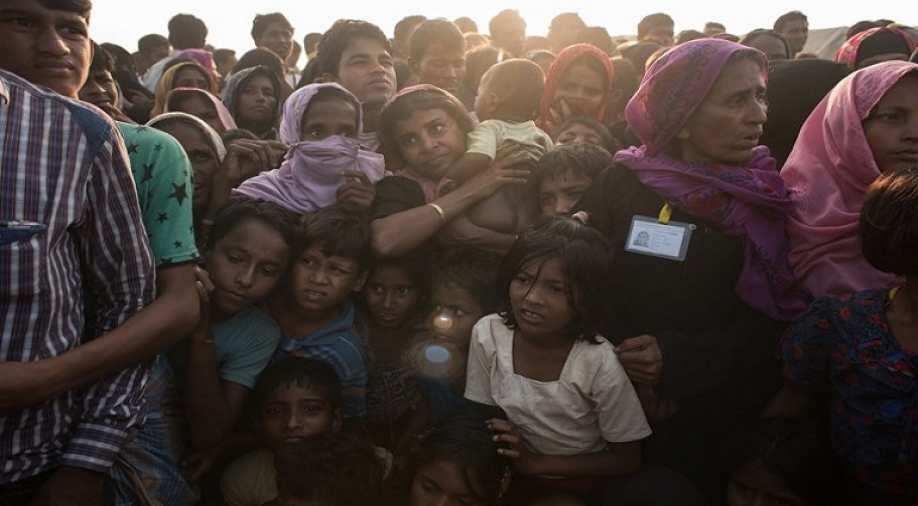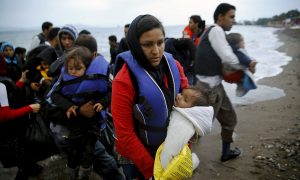Read Time:3 Minute, 30 Second
Three years ago this week, that is exactly what hundreds of thousands of traumatized Rohingya had to do.
I remember watching with horror images of Rohingya families fleeing Myanmar, trudging barefoot through rice fields, their lives on their backs, leaving behind their homes, their livelihoods, their dead, the friends and loved ones too old, too weak, or too beaten, to follow. They reached the border exhausted, injured, traumatized, and in need of urgent care.
Yet even as I write this, I’m aware that too many refugee stories focus on trauma and escape. Too often in the public consciousness, a refugee is a vulnerable, helpless person fleeing violence and in desperate need of rescue. That is an incomplete telling of the story and further injustice to its protagonists. While refugees do in fact need protection, they are defined far less by their status as beneficiaries of care than by their unfathomable courage, resilience, and desire for self-reliance.
This is true of every refugee community I have visited, be it Syrians or Afghans or South Sudanese, and it is certainly true of the Rohingya. The Rohingya are a Muslim minority in Myanmar, who despite living in the country for generations, have not been afforded the same rights as its citizens and who have been forced to flee persecution numerous times over the years.
From the outset, Rohingya refugees in Bangladesh took critical leadership roles in the humanitarian response to their own suffering. With support from UNHCR, the UN Refugee Agency, and NGO partners, they formed a community-based protection model, giving fellow refugees the opportunity to have a measure of control over their own lives and learn new skills. The model gave agency to all members of the Rohingya community.
That was before the coronavirus pandemic struck. The outbreak of Covid-19 has seen an 80% reduction of humanitarian workers in the camps. The role of the Rohingya refugee community volunteers has therefore become even more essential. As a former physician, I am in awe of the refugee community health workers who have rolled up their sleeves and volunteered to meet the needs of their community. They have worked together to reduce the risk of viral transmission and, given the circumstances, it is nothing short of inspiring.
Take 19-year-old Salma, for instance. She is a community health volunteer in the overcrowded Kutupalong refugee camp in Bangladesh. More than 600,000 people live in an area of just 13 square kilometers, five square miles; infrastructure and services are stretched to their limits.
Before the pandemic, she took part in a cross-generational volunteer program –half of which is comprised of girls and women- to provide health support, including pre- and post-natal care for women and infants in the camp. But in recent months, she has shifted her responsibilities to the Covid-19 response. Joined by more than 1,400 others, Salma now promotes hand washing and hygiene. She educates the community on how the virus spreads, how to recognize symptoms and seek care, as well as ensuring that those who show symptoms are tested.
Despite the challenges of living in a densely populated refugee camp, Salma and fellow volunteers have made a lifesaving difference in their community. By the end of July, there were fewer than 100 confirmed Covid-19 cases among the Rohingya refugee population of about 860,000. I find this very poignant, because it doesn’t take much of a leap to see how Salma’s work, halfway around the world, is in fact critical to the wellbeing and safety of my own family here in America. For one thing we have all learned in this pandemic is that nobody is safe from this virus until all of us are.
I am moved and inspired by the resilience of the Rohingya refugees. They are survivors. They escaped unspeakable horrors, made the long, painful journey to Bangladesh, and overcame the many hardships of life in the camps. They continue to show strength in maintaining hope and a commitment to going home again, against all odds. And now, each day, beneath the shadow of a pandemic, they are working, leading, healing, and challenging our idea of “who a refugee is.”

Happy
0
0 %

Sad
0
0 %

Excited
0
0 %

Sleepy
0
0 %

Angry
0
0 %

Surprise
0
0 %




Average Rating